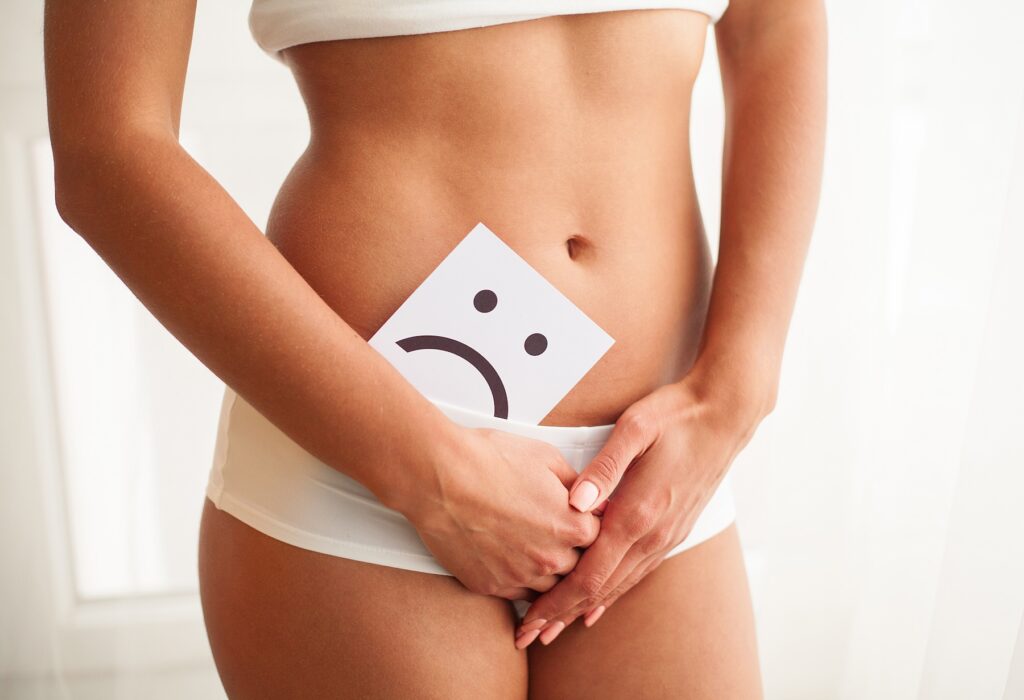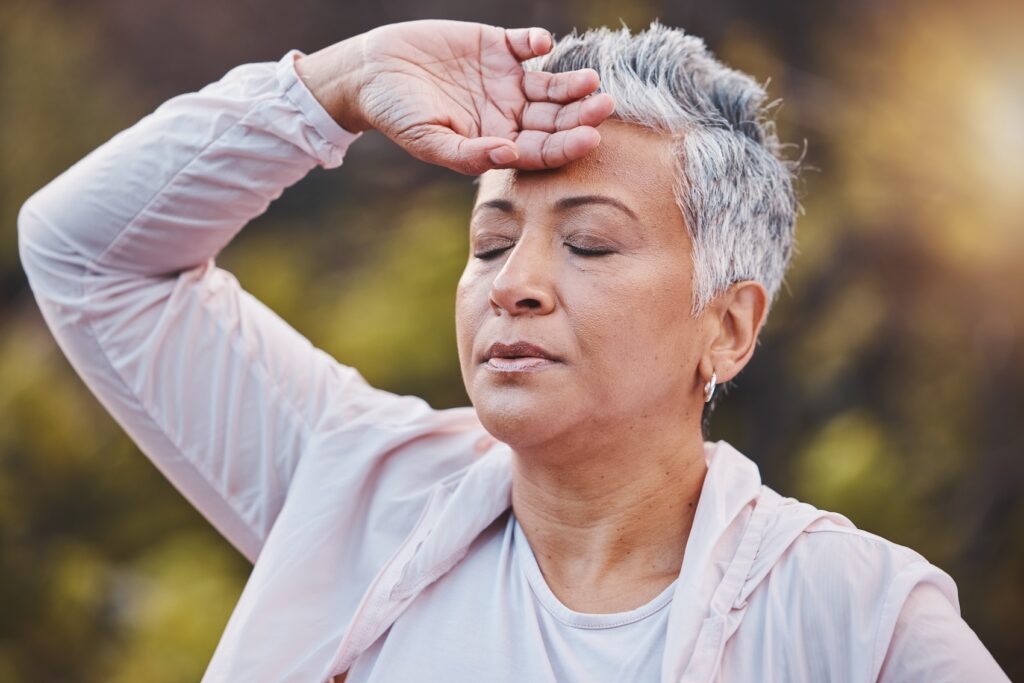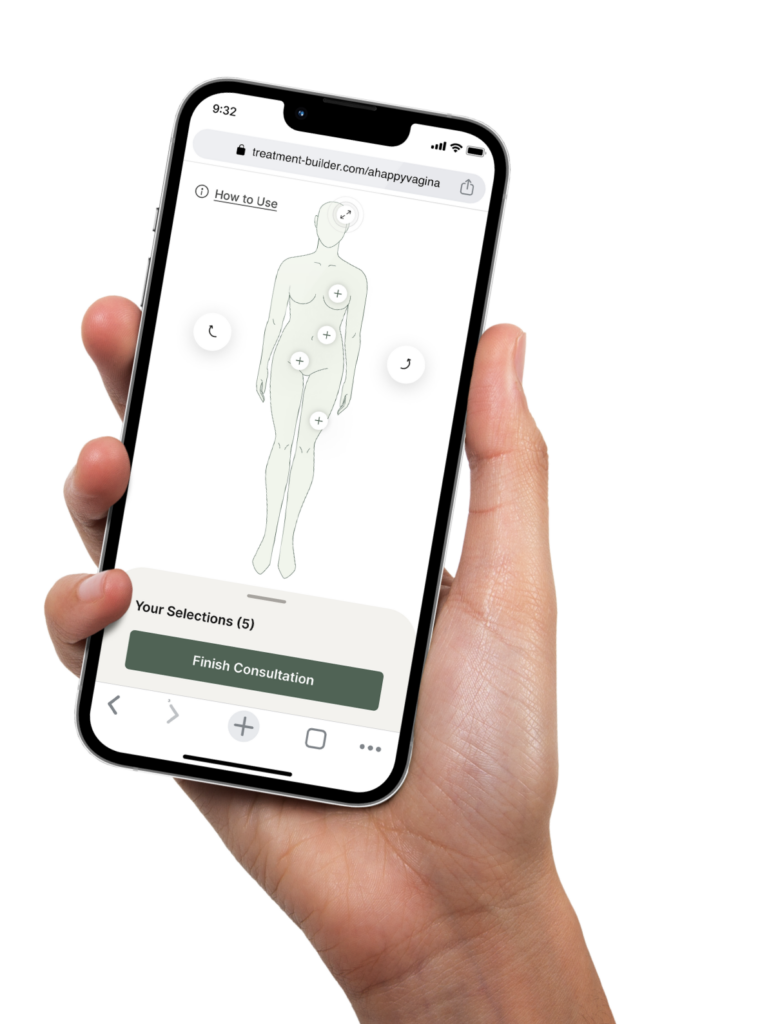
Vaginal Dryness
The genitourinary syndrome of menopause (GSM) includes bothersome vaginal, vulvar (lips of the vagina), and urinary symptoms that can affect quality of life, sexual satisfaction, and even your relationship with your partner. Unlike hot flashes, which typically improve with time, GSM usually worsens over time without treatment.
Menopause and aging can affect the genitourinary system in these ways:
● Loss of estrogen at menopause may cause the vaginal tissues to become thin and dry, with decreased elasticity and lubrication, often resulting in pain with sexual activity, routine pelvic examinations, and even discomfort wiping after urination or wearing certain clothing.
● Symptoms such as burning, itching, or irritation of the vulva; lack of lubrication and vaginal dryness; and discomfort or pain with sexual activity are common
● Burning on urination, increased frequency or urgency of urination, and increased risk for urinary tract infections also can occur.
● Symptoms may be more severe in women who undergo menopause as a result of the surgical removal of both ovaries (surgical menopause) or because of chemotherapy for cancer treatment and in those who receive aromatase inhibitors for prevention or treatment of breast cancers.
Treatment options
There are many effective treatment options for GSM, including over-the-counter and prescription therapies. First-line therapies for less severe symptoms include nonhormone over-the-counter lubricants used as needed for sexual activity and moisturizers used regularly (several times per week) to maintain moisture. Prescription therapies include low-dose vaginal estrogens, vaginal dehydroepiandrosterone inserts, and oral ospemifene. Nonhormone lubricants and moisturizers can be combined for optimal symptom relief and can be used in combination with prescription therapies for more severe symptoms.
Nonhormone remedies
● Vaginal lubricants are used with sexual activity and reduce discomfort and increase pleasure by decreasing friction. These include water-, silicone-, and oil-based products. Oil-based lubricants may damage condoms and may increase the risk of vaginal infections. Lubricants should not contain flavors
(sugar), warming properties, or solvents and preservatives such as propylene glycol and parabens that may cause irritation in some women.
● Vaginal moisturizers are used regularly, often several times weekly to maintain vaginal moisture, with a goal of reducing the daily symptoms of GSM.
● Regular sexual stimulation promotes vaginal blood flow and secretions. Sexual stimulation with a partner, alone, or with a device (such as a vibrator) can improve vaginal health.
● Expanding your views of sexual pleasure to include outercourse options, such as extended caressing, mutual masturbation, and massage, provide a way to remain sexually intimate in place of intercourse.
● Vaginal dilators can stretch and enlarge the vagina if it has become too short and narrow or if involuntary tightening occurs, preventing comfortable sexual activity. Dilators can be purchased and used with the guidance of a gynecologist, physical therapist, or sex therapist. You can find dilators online or at specialty stores.
● Pelvic floor exercises can strengthen weak pelvic floor muscles and relax tight ones. Pelvic floor physical therapy is available with trained therapists or there are at-home devices to help strengthen the pelvic floor and treat incontinence.
Vaginal hormone therapy
● An effective and safe treatment, low-dose local estrogen applied directly to the vagina relieves vaginal dryness and discomfort with sexual activity. Improvements usually occur within a few weeks or months with consistent use.
● FDA-approved low-dose vaginal estrogen products are available by prescription as vaginal creams
(used two or three nights/wk), a vaginal estradiol tablet or insert (used twice/wk), and an estradiol vaginal ring (changed every 3 mo).
● Dehydroepiandrosterone (DHEA; prasterone) is a hormone-containing insert placed in the vagina nightly that reduces vaginal dryness and discomfort with sexual activity.
● Low-dose vaginal estrogen or DHEA may be options for women with a history of breast or uterine cancer after careful consideration of risks and benefits in collaboration with their primary care professionals and their oncologists.
Systemic estrogen therapy
Systemic estrogen therapy provided for treatment hot flashes also treats vaginal dryness, although some women still benefit from additional low-dose vaginal hormone treatment. If only vaginal symptoms are present, low-dose vaginal hormone treatments are recommended.
Other therapies
● Ospemifene is a prescription selective estrogen receptor modulator(SERM) available as an oral tablet taken daily for the treatment of vaginal dryness and sexual pain.
● Vaginal laser therapy such as fractional CO2 laser or radiofrequency devices are FDA cleared for vaginal use but not specifically for treatment of GSM. Treatments are costly and generally not covered by insurance. Additional, longer-term studies are needed to establish efficacy and safety before these therapies can be routinely recommended for treatment of GSM.
Treatment Options Summary
Vaginal lubricants (nonprescription). Many available products.
Vaginal moisturizers (nonprescription). Many available products.
Vaginal estrogen therapy (prescription required).
– Estrace or Premarin vaginal cream (0.5-1 g placed in vagina 2-3 times/wk: generic available).
– Estring (small, flexible estradiol ring placed in vagina and changed every 3 mo: 7.5 µg/d).
– Vagifem (estradiol tablet placed in vagina twice/wk, 10 µg: generic available).
– Imvexxy (estradiol softgel insert placed in vagina twice/wk: 4 µg, 10 µg).
Intravaginal dehydroepiandrosterone (Intrarosa; prescription required).
– A 6.5 mg vaginal insert used nightly.
Ospemifene (Osphena; prescription required).
– Oral 60 mg tablet taken once daily.
Vaginal “exercise”
Sexual activity (with or without a partner).
Stretching exercises with lubricated vaginal dilators.
Pelvic floor physical therapy.
Notes: Vaginal and vulvar symptoms not related to menopause include yeast infections, allergic reactions, and certain skin conditions, so consult your healthcare professional if symptoms do not improve with treatment.
Compounded vaginal estrogen and testosterone are not FDA regulated or recommended for treatment of GSM in most cases.
This MenoNote, developed by the NAMS Education Committee of The North American Menopause Society, provides current general information but not specific medical advice. It is not intended to substitute for the judgment of a person’s healthcare professional. Additional information can be found at www.menopause.org.
Copyright © 2022 The North American Menopause Society. All rights reserved. NAMS grants permission to healthcare professionals to reproduce this MenoNote for distribution to women in their quest for good health.


